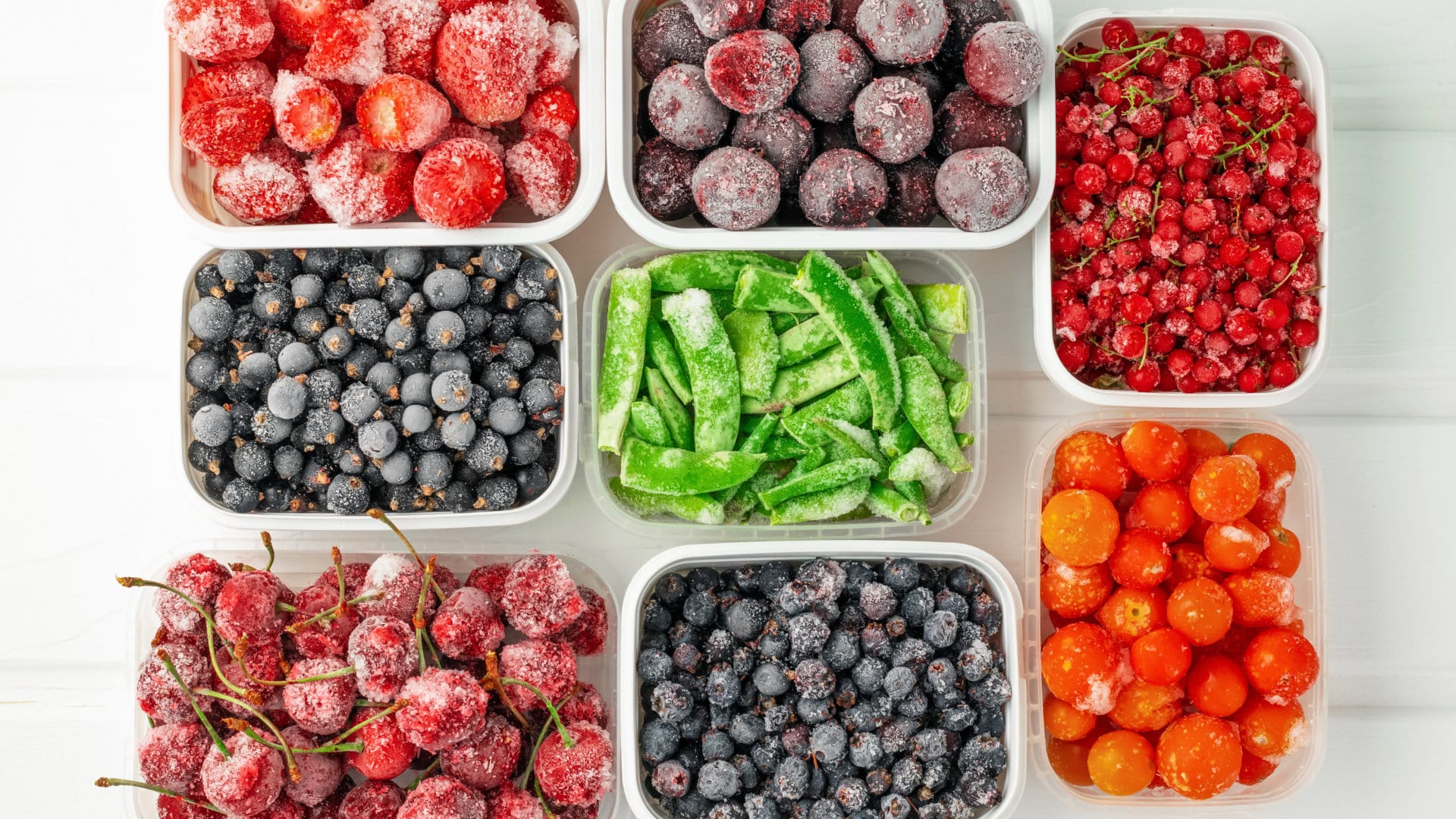
Freezing fruit is a simple and cost-effective way to preserve the freshness and nutrients of fruit without any of the added ingredients that are common in canned or dried fruits. When you freeze fruit, you can also control the portion sizes, which is helpful if you’re cooking for one or two people.
Many fruits freeze well so you can enjoy them year-round. Frozen fruit is also perfect for smoothies, baked goods, and as a snack. So, next time you’re at the grocery store, skip the canned and preserved fruit aisle and opt for fresh fruit that you can freeze yourself. You’ll not only save money, but you’ll have a healthier and more delicious snack option.
What fruit can be frozen?
Almost all fruits can be frozen. From berries like strawberries, blueberries, and raspberries to tropical favorites such as mangoes and pineapples—there’s no limit to which fruit you can freeze. In fact, freezing fruit at its peak ripeness ensures that it retains maximum flavor while preserving essential vitamins and minerals. Plus, by stocking up on seasonal produce when it’s abundant (and often cheaper), you’ll always have access to fresh-tasting fruit year-round.
It’s important to note, however, that there are a few fruits that may change in texture when they are frozen. These include fruits that are very high in water, such as citrus and watermelon. Although these can also be frozen, it’s not a very common practice.
How to freeze fruit to ensure freshness
- Make sure that the fruit is ripe before freezing. This will give it the best chance of retaining its flavor and texture once frozen.
- Wash and dry the fruit thoroughly before slicing or chopping it into bite-sized pieces. Drying the fruit will ensure that ice doesn’t form, causing the fruit to clump together when frozen. Fruit with inedible outer layers such as bananas, melons, and pineapples should also be peeled.
- Once prepped, place the cut pieces on a baking sheet lined with parchment paper, making sure they aren’t touching so they don’t freeze together as one big clump later on.
- Freeze for about an hour until firm, then transfer them into freezer-safe containers or bags labeled with the date and type of fruit inside.
By following these steps, you can save money by buying seasonal produce when prices are low, and enjoy fresh-tasting fruits throughout the year without worrying about spoilage.
How to make sure your fruit doesn’t lose its color
First of all, make sure your fruit is ripe, but not overripe—if it’s already starting to turn brown or soft in spots before freezing, discoloration will be more likely. Next up is preparation. Cut larger fruits like peaches or apples into slices or chunks so they’ll freeze evenly. If you’re freezing berries like strawberries or blueberries, which tend to get mushy after being defrosted, consider flash-freezing them first by spreading them out on a baking sheet lined with parchment paper and placing the tray in the freezer for an hour until the fruit is solid.
When packing your prepared fruits for storage, use either plastic bags designed specifically for food storage (which help prevent air from getting inside) or vacuum-sealed bags, which remove as much air as possible thereby reducing oxidation during freezing. Finally, adding lemon juice (or even citric acid powder) to the fruit helps keep enzymes at bay while also adding flavor depth; just toss your sliced apples with a tablespoon of lemon juice per cup of apple pieces prior to bagging and freezing them.
How long does it take fruit to freeze?
Freezing times can vary depending on a few factors, such as the type of fruit, the size of the pieces, and the temperature of your freezer. So if you want to start freezing your fruit, here are some general guidelines:
Small berries like blueberries and raspberries take around two hours in the freezer before they’re fully frozen. Larger fruits like strawberries and grapes will need about three to four hours, while sliced bananas might take up to two hours as well.
To ensure your fruit freezes fully, it’s best to avoid opening the freezer door too frequently, as this will let warm air in. Additionally, keeping your freezer at or below zero degrees Fahrenheit will ensure that your fruit freezes in good time, and remains frozen and safe to consume for months.
How long does frozen fruit last in the freezer?
The answer varies depending on the type of fruit. Generally speaking, most fruits will last up to 8-12 months when properly stored in the freezer. However, some types such as berries or citrus may start losing their texture after six months.
Remember: proper storage techniques are key when it comes to prolonging the lifespan of frozen foods. Always make sure that your containers or bags are tightly sealed and labeled with date information so that you know exactly what’s inside each package.
How to properly defrost frozen fruit
To start with, remove the frozen fruit from its packaging and place it in a strainer or colander over a bowl. This will help catch any excess liquid as the fruit thaws out. Then simply let it sit at room temperature until it’s completely thawed.
However, if you need your fruit quickly or don’t have much time on hand, there’s another option that can speed up the process—using warm water! Simply fill up a large bowl with warm water and submerge your sealed bag of frozen fruit into it for about 10-15 minutes, until it is thawed.
Uses for frozen fruit
Whether it’s smoothies, desserts, or even savory dishes like salads, the possibilities are endless. Not to mention the convenience factor—with frozen fruit on hand in your freezer at all times, you’ll never have to worry about spoiled produce again. Plus, using frozen fruit allows you to enjoy out-of-season fruits year-round without sacrificing taste or nutrition.
Common uses for frozen fruit:
- Smoothies
- Baking
- Compote
- Fruit sauce
- In cereals

Appliance Industry 2024 Q1 Results

Congrats to our graduating April 2024 class

How to test a gas range ignitor

Congrats to our graduating March 2024 class

How to test a 120 volt receptacle

Congrats to our graduating February 2024 class

Why Is Your Dishwasher Soap Not Dissolving? (5 Easy Fixes)

Refrigerator Dripping Water Inside? 5 Quick Fixes

Appliance Industry 2023 Q4 Results



